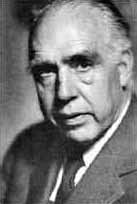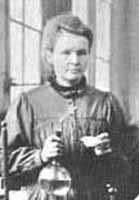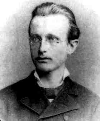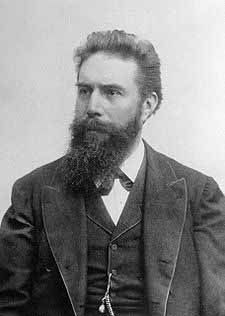Augustin Louis Cauchy




Cauchy pioneered the study of analysis and the theory of permutation groups. He also researched in convergence and divergence of infinite series, differential equations, determinants, probability and mathematical physics.
Cauchy stated as a military engineer and in 1810 went to Cherbourg to work on Napoleon's English invasion fleet. In 1813 he returned to Paris and, after persuasion from Lagrange and Laplace, devoted himself to mathematics.
He held various posts in Paris at Faculté des Sciences, the Collège de France and École Polytechnique. In 1816 he won the Grand Prix of the French Academy of Science.
He pioneered the study of analysis and the theory of substitution groups (now called permutation groups). Cauchy proved in 1811 that the angles of a convex polyhedron are determined by its faces. In 1814 he published the memoir on definite integrals that became the basis of the theory of complex functions.
His other contributions include researches in convergence and divergence of infinite series, differential equations, determinants, probability and mathematical physics.
Numerous terms in mathematics bear his name:- the Cauchy integral theorem, in the theory of complex functions; the Cauchy-Kovalevskaya existence theorem for the solution of partial differential equations; the Cauchy-Riemann equations and Cauchy sequences.
Cauchy was the first to make a rigorous study of the conditions for convergence of infinite series and he also gave a rigorous definition of an integral. His text "Cours d'analyse" in 1821 was designed for students at École Polytechnique and was concerned with developing the basic theorems of the calculus as rigorously as possible. The 4-volume text "Exercises d'analyse et de physique mathematique" published between 1840 and 1847 proved extremely important.
He produced 789 mathematics papers but was disliked by most of his colleagues. He displayed self-righteous obstinacy and an aggressive religious bigotry. An ardent royalist he spent some time in Italy after refusing to take an oath of allegiance. He left Paris after the revolution of 1830 and after a short time in Switzerland he accepted an offer from the King of Piedmont of a chair in Turin where he taught from 1832. In 1833 Cauchy went from Turin to Prague in order to follow Charles X and to tutor his son.
-----
Jean Baptiste Joseph Fourier

Fourier studied the mathematical theory of heat conduction. He established the partial differential equation governing heat diffusion and solved it by using infinite series of trigonometric functions.
Fourier trained for the priesthood but did not take his vows. Instead took up mathematics studying (1794) and later teaching mathematics at the new Eacute;cole Normale.
In 1798 he joined Napoleon's army in its invasion of Egypt as scientific advisor. He helped establish educational facilities in Egypt and carried out archaeological explorations. He returned to France in 1801 and was appointed prefect of the department of Isere by Napoleon.
He published "Theacuteorie analytique de la chaleur" in 1822 devoted to the mathematical theory of heat conduction. He established the partial differential equation governing heat diffusion and solved it by using infinite series of trigonometric functions. In this he introduced the representation of a function as a series of sines or cosines now known as Fourier series.
-----
Carl Friedrich Gauss

Gauss's dissertation gave the first proof of the fundamental theorem of algebra. At the age of 24 he published his theory of numbers, one of the most brilliant achievements in the history of mathematics.
A child prodigy, Gauss taught himself to read and to count by the age of three. Recognising Gauss's talent, the Duke of Brunswick in 1792 provided him with money to allow him to pursue his education. He attended Caroline College from 1792 to 1795 and at this time Gauss formulated the least-squares method and a conjecture on the distribution of primes. This conjecture was proved by Jacques Hadamard in 1896.
In 1795 Gauss went to Göttingen where he discovered the fundamental theorem of quadratic residues.
Gauss developed the concept of complex numbers and in 1799 the University of Helmstedt granted Gauss a Ph.D. for a dissertation that gave the first proof of the fundamental theorem of algebra. In his dissertation Gauss severly criticized Legendre, Laplace and other major mathematicians of the day for their lack of rigour.
At the age of 24 he published "Disquisitiones arithmeticae", his theory of numbers, one of the most brilliant achievements in the history of mathematics. The construction of regular polyhedra occur in this work as do integer congruences and the law of quadratic reciprocity.
He also calculated orbits for the minor planets Ceres and Pallas. The asteroid Ceres had been briefly observed in January 1801 but had then, after it had been tracked for 41 days, was lost in the brightness of the Sun. Gauss computed the orbit using his least squares method and correctly predicted where and when Ceres would reappear. After this he accepted a position as astronomer at the Göttingen Observatory.
In 1820 Gauss invented the heliotrope, an instrument with a movable mirror which reflected the Sun's rays. It is used in geodesy. During the late 1820s, in collaboration with the physicist Wilhelm Weber who he met while the guest of Alexander von Humboldt in Berlin, Gauss explored many areas of physics doing basic research in electricity and magnetism, mechanics, acoustics, and optics. In 1833 he constructed the first telegraph.
When in his 80th year a fellow mathematician met him and described him as follows:
... a venerable, fine old fellow, with a contented manly expression. There is an extraordinary aspect of power about him and his every word. He is about 80 years of age, but not a trace of superannuation is seen about him.Gauss made a careful study of foreign papers in the reading room at Göttingen and in particular made a systematic study of the financial news. This stood him in very good stead since he was able to gain a considerable personal fortune through his dealings on the stock exchange. He died a very rich man.
-----
David Hilbert

Hilbert received his Ph.D. from the University of Königsberg and was a member of staff there from 1886 to 1895 In 1895 he was appointed to the chair of mathematics at the University of Göttingen, where he continued to teach for the rest of his life.
Hilbert's first work was on invariant theory, in 1888 he proved his famous Basis Theorem. First he gave an existence proof but, after Cayley, Gordan, Lindemann and others were baffled, in 1892 Hilbert produced a constructive proof which satisfied everyone.
In 1893 while still at Königsberg he began a work "Zahlbericht" on algebraic number theory. The "Zahlbericht" (1897) is a brilliant synthesis of the work of Kummer, Kronecker and Dedekind but contains a wealth of Hilbert's own ideas. The ideas of the present day subject of 'Class field theory' are all contained in this work.
Hilbert's work in geometry had the greatest influence in that area after Euclid. A systematic study of the axioms of Euclidean geometry led Hilbert to propose 21 such axioms and he analysed their significance.
He published "Grundlagen der Geometrie" in 1899 putting geometry on a formal axiomatic setting. His famous 23 Paris problems challenged (and still today challenges) mathematicians to solve fundamental questions.
In 1915 Hilbert discovered the correct field equation for general relativity before Einstein but never claimed priority.
In 1934 and 1939 two volumes of "Grundlagen der Mathematik" were published which were intended to lead to a 'proof theory' a direct check for the consistency of mathematics. Göde's paper of 1931 showed that this aim is impossible.
Hilbert contributed to many branches of mathematics, including invariants, algebraic number fields, functional analysis, integral equations, mathematical physics, and the calculus of variations.
-----
George Gabriel Stokes

Stokes established the science of hydrodynamics with his law of viscosity (1851), describing the velocity of a small sphere through a viscous fluid.
Stokes published papers on the motion of incompressible fluids in 1842-43 and on the friction of fluids in motion and the equilibrium and motion of elastic solids in 1845.
In 1849 Stokes was appointed Lucasian Professor of Mathematics at Cambridge. In 1851 Stokes was elected to the Royal Society and was secretary of the Society from 1854 to 1884 when he was elected president.
He investigated the wave theory of light, named and explained the phenomenon of fluorescence in 1852, and in 1854 theorised an explanation of the Fraunhofer lines in the solar spectrum. He suggested these were caused by atoms in the outer layers of the Sun absorbing certain wavelengths. However when Kirchhoff later published this explanation Stokes disclaimed any prior discovery.
Stokes developed mathematical techniques for application to physical problems, founded the science of geodesy, and greatly advanced the study of mathematical physics in England. His mathematical and physical papers were published in 5 volumes, the first 3 of which Stokes edited himself in 1880, 1883 and 1891. The last 2 were edited by Sir Joseph Larmor in 1887 and 1891.



